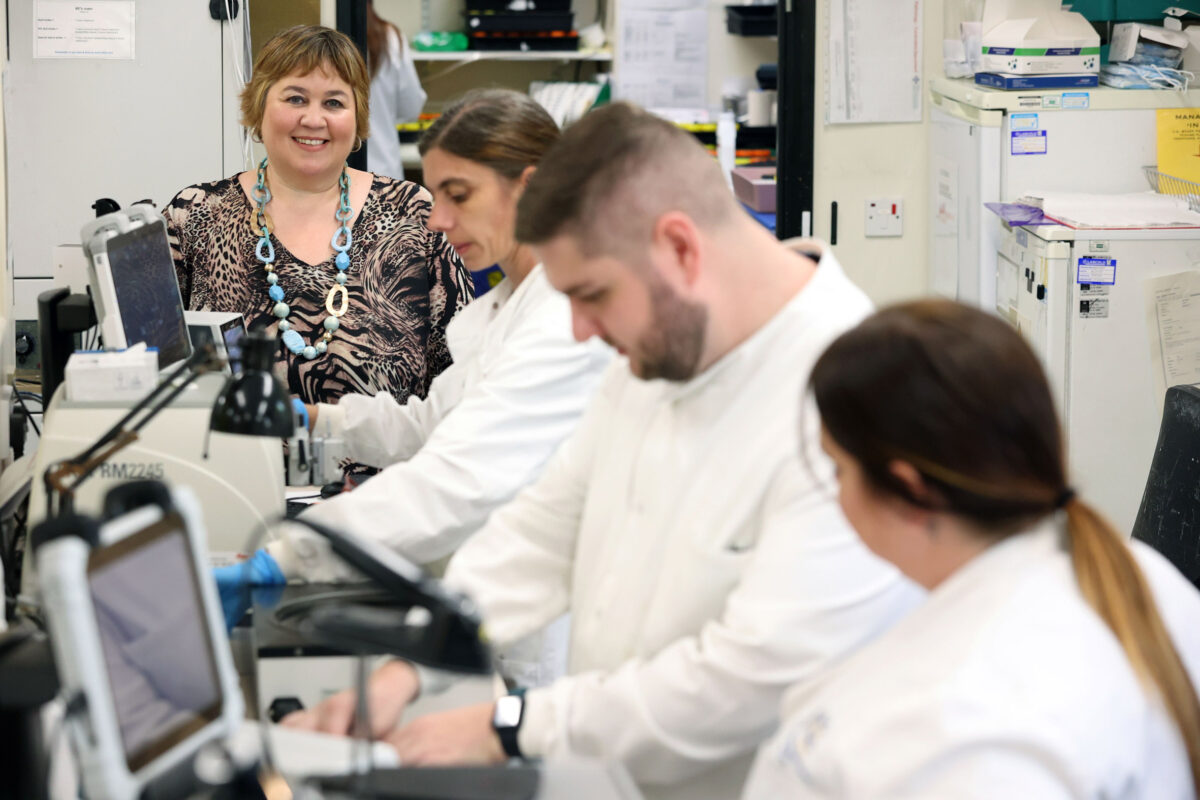Educator burnout and how to avoid it

Employee burnout is on the rise, with almost every sector reporting an increase in stress-related illness amongst workers, and educators are no exception. In fact, according to the National Foundation for Educational Research, those working within the education sector are more likely to suffer job-related stress than any other profession. While teaching can be a highly rewarding and fulfilling profession, it does come with its own challenges.
One of the major draws for people in the profession is the variety in the role. No two days are the same. Naturally, some days will be great, with students highly engaged and motivated in the lessons teachers work so hard to plan and structure, but others can be more challenging.
For instance, there are often moments when you miscalculate students’ prior knowledge and end up having to recap content from the previous year, which of course throws off time allocation for other topics too. Other times, an unexpected school event, fire alarm test or absences can cause delays. On these days, it’s natural to feel drained, stressed and exhausted, both mentally and physically.
However, the pandemic has only seen more pressure put on teachers as they adjust to disruptions to lessons and exams, and the introduction of home-based learning and ongoing safety management measures to keep students and staff safe – all while juggling their heavy workloads and personal lives, too. Along with dealing with increased student behaviour challenges during the pandemic, teachers had to dedicate extra hours to morphing existing lesson plans, trialling new technologies and adapting it for in person and remote learners.
In fact, NASUWT found that one in four teachers sought medical help last year because of the impact the pandemic had on their workload and mental health. These worrying statistics highlight the urgent need for intervention and support measures to protect teachers’ wellbeing and prevent burnout from escalating.
So, how can burnout be tackled face on?
- Creating healthy work boundaries
In a role like teaching, it can be difficult to separate your life at school from your life at all, particularly when you are deeply passionate about the work you do. However, space is important. While it can be tempting to bring home coursework or essays to mark in the evening or over the weekend, creating healthy work boundaries is vital.
With this in mind, senior leadership teams must support staff in putting themselves and their health first by encouraging them to set and observe boundaries. If teachers are to perform to the best standard in the classroom and provide the best education to students, leadership teams must encourage teachers to take time to refuel and look after their own health and wellbeing.
For many educators, the planning time during the work day is not enough, and in many cases, working late hours or planning materials over the weekend is common. However, finding the right balance and space away from the class is crucial. Teachers must prioritise quality time with family and friends in the evenings, set healthy boundaries by blocking out their schedules for personal time or to enjoy the activities that they’re passionate about so they can recharge. If teachers are to beat the burnout, balancing work with their own lives, whilst also fitting in rest and relaxation is necessary.
- Asking for help
Hopefully, the place you teach should feel like a community. If you are feeling overwhelmed or that your mental health is taking a toll, communicate that to your colleagues and seniors who can help address why that is and can support you in taking tangible steps to change it. If your workload is unbearable, you have concerns about your students’ performance or you are juggling your own personal issues, let those around you know before the problems escalate.
Whether it be sitting down and speaking to your department head, talking to a friendly work colleague who can relate to your struggles, or speaking to someone external like your doctor or a therapist, getting your concerns off your chest and protecting your mental wellbeing is a priority.
Simply start talking. The more you choose to keep inside, the more your feelings of stress and frustration will continue and bubble over into your next teaching day.
- Practising authentic, real self-care
Self-care need not be a yoga retreat or spa day, it can simply be listening to your favourite music, going out for a long walk or reading a book. It can also be taking the step to book a therapy appointment or doctor’s visit.
Self-care is any activity that can boost mental, emotional and physical health. Although it is a simple concept, it’s something that teachers can often overlook when distracted by the day-to-day school routine and work pressures.
Good self-care improves general mood and unsurprisingly, reduces anxiety – which is why it’s brilliant in beating burnout. But importantly, it must be planned and meaningful to you. Adding certain activities to your calendar and committing to self-care plans, even after a busy day of work, can be hugely beneficial for your mental and physical wellbeing.
- Improving connections with parents and the broader school community
At the core of teaching is connections. Building connections that matter can take your teaching to another level. By strengthening relationships within and beyond the classroom, you can see huge reward – students are likely to engage more with lessons and perform well, thereby easing the pressure on staff.
In fact, data collected from SMART Technologies’ Edtech Assessment Tool shows that those connecting with the entire community have better performance outcomes. When the full school community is engaged with how learning is delivered and enabled to make active choices, this improves learning for all students.
By staying connected with students and forging greater relationships, irrespective of where the lessons are held, the entire community can thrive. The more you boost these connections, the more enthusiasm and energy you will bring to the classroom, reducing symptoms of burnout.
- Be strategic about the technology you adopt in your classes
The past two years have proposed many challenges for the traditional classroom and educators have been particularly savvy in navigating them – whether that be resolving login issues, battling with unreliable wifi, or adapting well thought-out lesson plans last minute amid hybrid and remote learning.
As a result, the need for ed-tech tools has accelerated at a rate like never before, but teachers must be strategic about what resources they use and how they use them. Adapting to new technology that is easy to use and integrates with current tools is key. Look to technology that is user friendly, that provides quick how to videos or has an active community that can address any on demand questions that you may have.
Importantly, to build meaningful connections and create high levels of engagement in classes, integrating technology that is simple and accessible to use will be a huge support. Technology that incorporates active learning principles and capabilities that ensure educators can drive active, engaging and collaborative learning can be a huge help in empowering both students and teachers to maintain high levels of energy in the classroom, whilst avoiding burnout.
Lumio, SMART Technologies’ digital learning tool, for instance, has allowed educators to easily transition between in-class and remote learning where needed, be creative with their active learning method, and crucially, make new learning situations easier for students and teachers alike when circumstances changed throughout the pandemic. SMART has also partnered with Kooth, the leading digital mental wellbeing platform, to help make Kooth’s clinically proven mental health resources and community available to more teachers and students. By connecting the technology with mental health resources, teachers and students alike will have greater access to vital mental health support.
Edmodo is another example of an education tool that helps teachers and students connect, in an internal social network style platform. Teachers can create online collaborative groups, administer and provide educational materials, measure student performance, among other functions.
By turning to these digital tools, educators will not only have greater support, but gain the insight that they need to provide outstanding learning experiences while balancing their own time and energy.
To conclude, whilst it may not be possible to eliminate all the burden and stress that comes with a hugely important and dynamic profession like teaching, there are certainly methods and strategies that teachers can use to take action and avoid burnout, before it escalates and becomes out of hand.












Responses